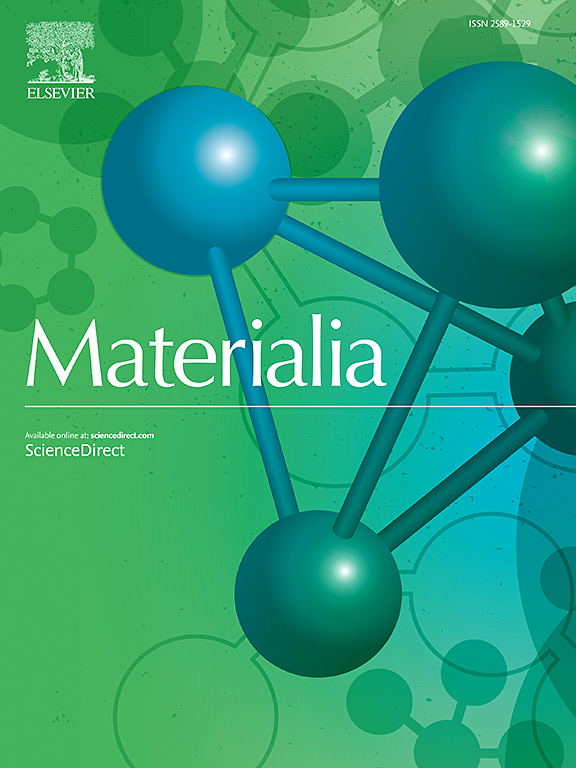CFD-integrated kinetic model for high-temperature iron oxidation in multispecies reactive environments
IF 2.9
Q2 MATERIALS SCIENCE, MULTIDISCIPLINARY
引用次数: 0
Abstract
This paper introduces a novel model that integrates the high-temperature kinetics of iron oxidation into a CFD framework, aiming to predict oxide scale evolution in complex systems such as combustion furnaces. Considering atmospheres with O2, CO2, CO, H2O, and H2 as reactive species, the model employs CFD techniques to accurately forecast local gas composition, enabling the application of the oxidation model to each element of the iron surface. The scale evolution is represented by either linear or parabolic growth, depending on whether oxidation kinetics or ion diffusion across the scale is the limiting factor.
Simulations are conducted on an experimental reactor where low-carbon iron samples undergo oxidation in various atmospheres and temperatures (900 °C to 1200 °C). Comparisons with the measured gained mass show satisfactory agreement, particularly in oxygen atmospheres at high temperatures and regarding the linear growth predicted in 10 % CO2 or 10 % H2O atmospheres. The model also performs reasonably well in quaternary atmospheres, with discrepancies attributed to initial linear constants at lower temperatures. Despite these challenges, the model demonstrates favorable performance in representing the parabolic growth observed in the tests. Overall, in intricate operational scenarios with numerous parameters, the model's performance is reasonably favorable, which allows the simulation of iron oxidation in complex reactors or combustion systems.

多组分反应环境下高温铁氧化cfd集成动力学模型
本文介绍了一种将铁氧化高温动力学集成到CFD框架中的新模型,旨在预测燃烧炉等复杂系统中氧化垢的演变。该模型考虑了O2、CO2、CO、H2O和H2为反应物质的大气,采用CFD技术准确预测了局部气体成分,使氧化模型能够应用于铁表面的每个元素。根据氧化动力学或离子在尺度上的扩散是否是限制因素,尺度的演化由线性或抛物线型增长来表示。在实验反应器上进行了模拟,其中低碳铁样品在各种气氛和温度(900°C至1200°C)下进行氧化。与测量得到的质量的比较显示出令人满意的一致性,特别是在高温下的氧气气氛中,以及在10% CO2或10% H2O气氛中预测的线性增长。该模型在第四纪大气中也表现得相当好,其差异归因于较低温度下的初始线性常数。尽管存在这些挑战,该模型在表示测试中观察到的抛物线增长方面表现出良好的性能。总体而言,在具有众多参数的复杂操作场景中,该模型的性能相当良好,可以模拟复杂反应器或燃烧系统中的铁氧化。
本文章由计算机程序翻译,如有差异,请以英文原文为准。
求助全文
约1分钟内获得全文
求助全文
来源期刊

Materialia
MATERIALS SCIENCE, MULTIDISCIPLINARY-
CiteScore
6.40
自引率
2.90%
发文量
345
审稿时长
36 days
期刊介绍:
Materialia is a multidisciplinary journal of materials science and engineering that publishes original peer-reviewed research articles. Articles in Materialia advance the understanding of the relationship between processing, structure, property, and function of materials.
Materialia publishes full-length research articles, review articles, and letters (short communications). In addition to receiving direct submissions, Materialia also accepts transfers from Acta Materialia, Inc. partner journals. Materialia offers authors the choice to publish on an open access model (with author fee), or on a subscription model (with no author fee).
 求助内容:
求助内容: 应助结果提醒方式:
应助结果提醒方式:


